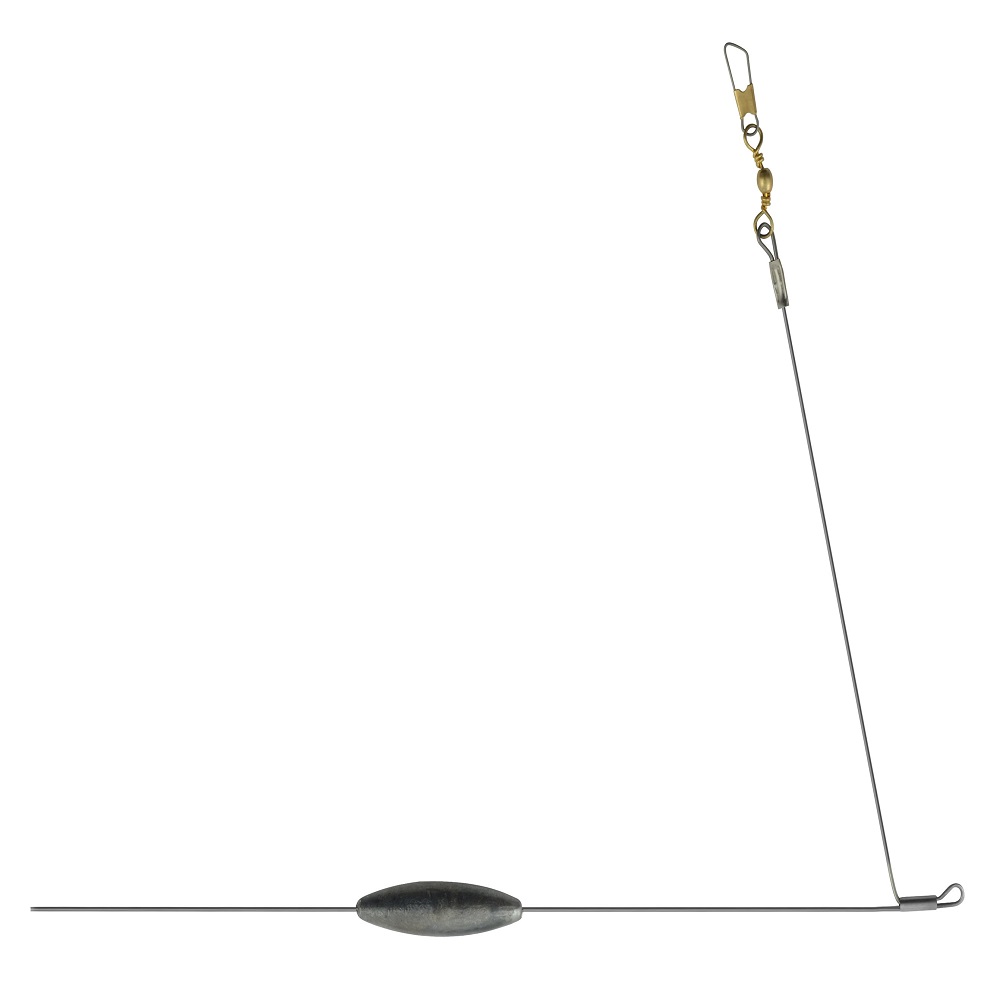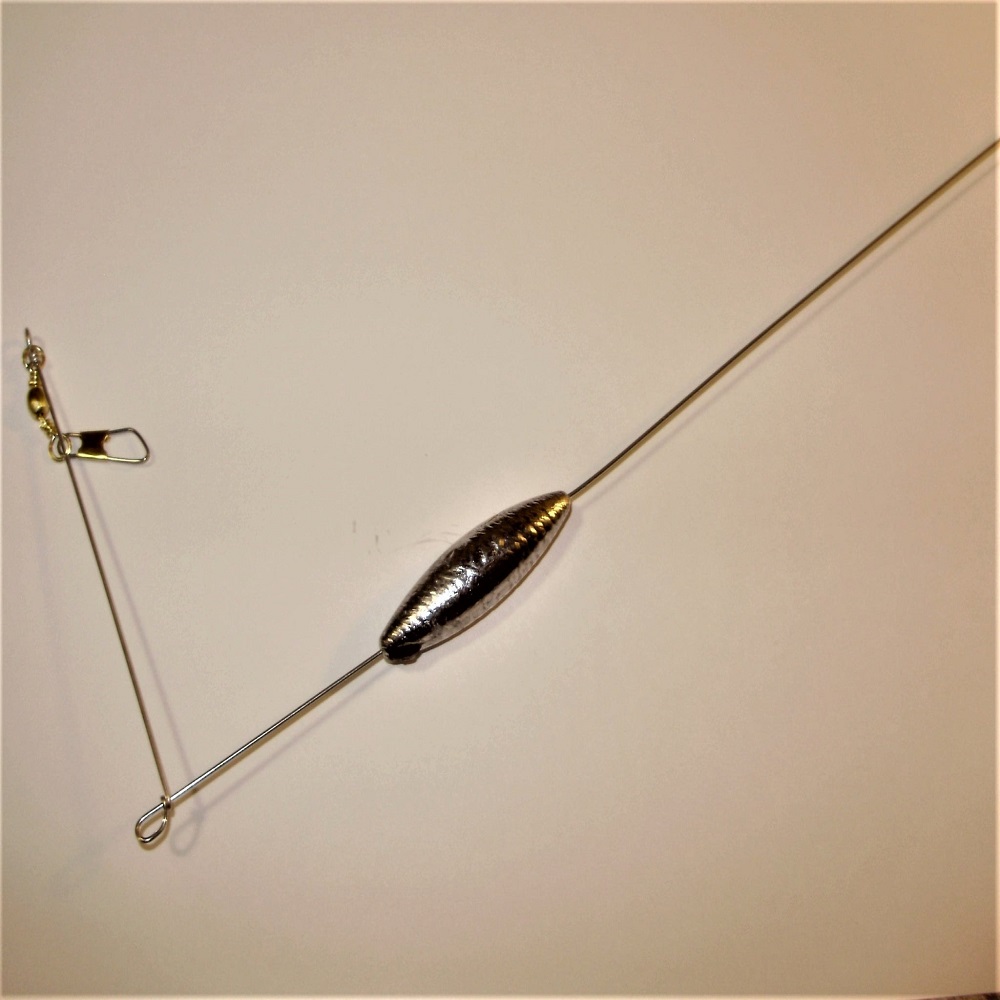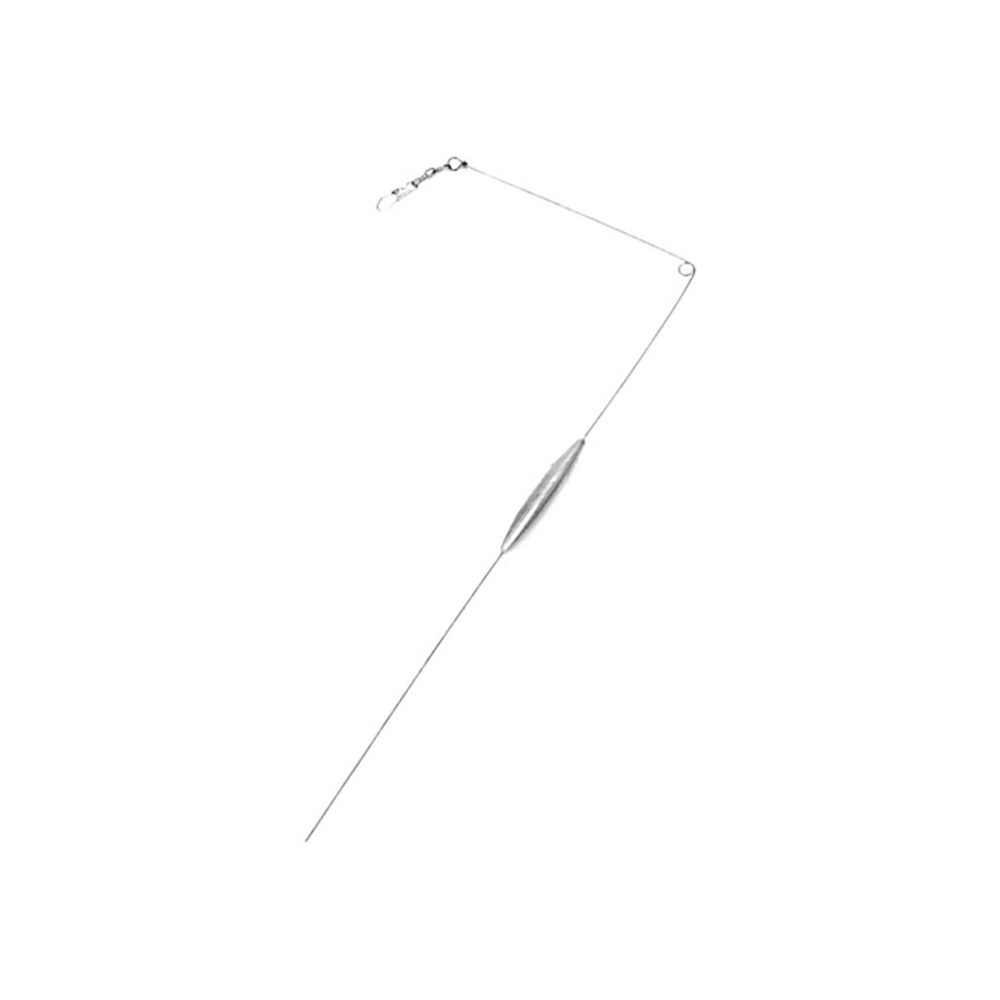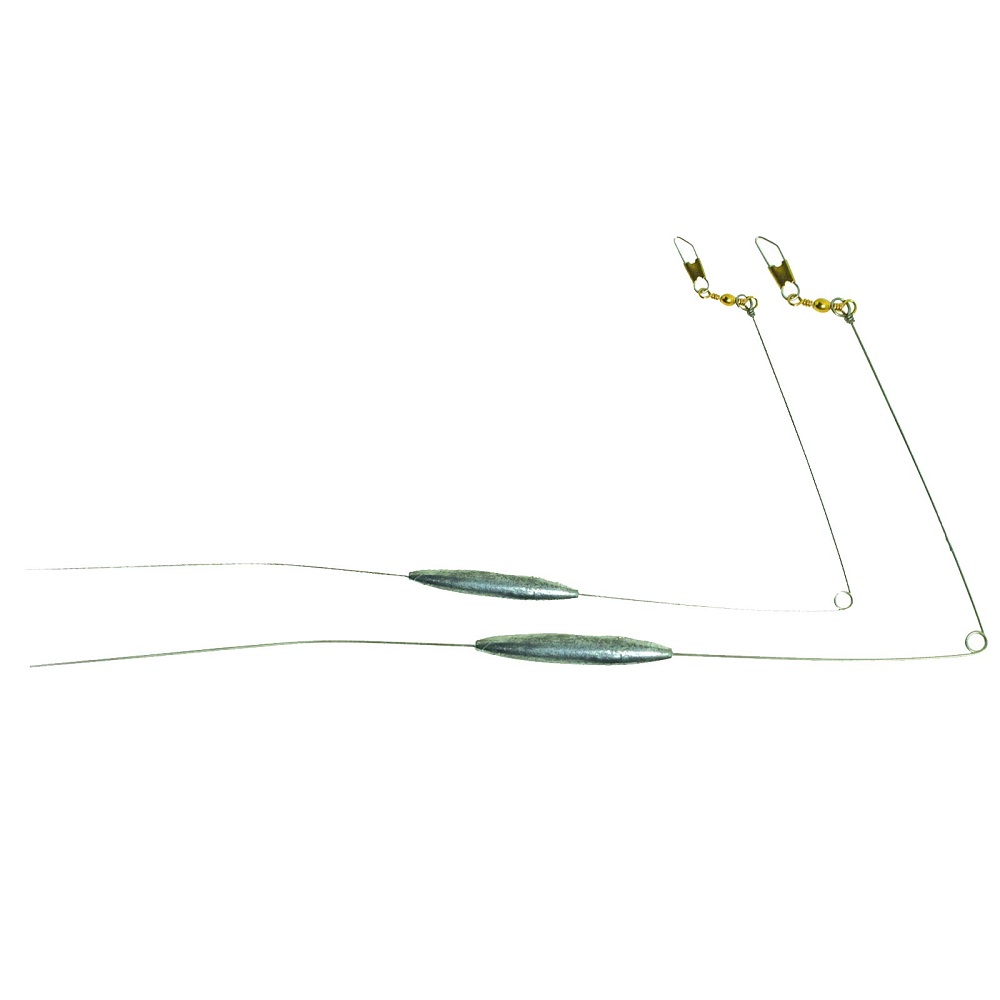Introduction to Bottom Bouncer Rigs
Bottom bouncer rigs are a must-know for avid anglers, especially those targeting walleye. These versatile tools allow for precision fishing by keeping your bait close to the lakebed, where walleyes often feed. This guide illuminates the essential elements of bottom bouncer rigs and how they can elevate your fishing game.
What is a Bottom Bouncer Rig?
A bottom bouncer rig comprises a weighted wire with a pivoting arm, designed to keep your bait near the bottom without snagging. It provides a simple yet effective way to present your bait at various depths and speeds.
Importance in Walleye Fishing
For walleye enthusiasts, bottom bouncer rigs are invaluable. These rigs excel in maintaining bait position in the strike zone, adapting to depth changes quickly, and providing tactile feedback from subtle bites. By using this tool, fishermen can increase their catch rates and target walleyes more efficiently across different seasons and conditions.

Key Components of Bottom Bouncer Rigs
Understanding the Weight System
In bottom bouncer rigs, the weight system is crucial for effective fishing. Each weight is chosen based on the depth and speed of the water you are fishing in. A general rule of thumb is an ounce of weight for every 10 feet of water depth. However, preferences may vary; some anglers opt for heavier weights to maintain better control in front areas of their boat, particularly in shallower waters. This approach helps maintain a targeted bait presentation at a 45-degree line angle, optimizing catch potential and minimizing line tangling.
The Head and Arm of Bottom Bouncers
The head and the arm are fundamental components of a bottom bouncer rig. The head serves as the attachment point for the main fishing line, while the arm holds the swinging wire that connects to your bait setup. This configuration allows for the lure or bait to move more naturally, mimicking the movement of prey in the water. The swivel on the arm helps prevent line twisting, a common issue when retrieving or trolling your line. Using these parts effectively ensures that your bait remains just above the lake bed, maximizing the chances of a strike from bottom-dwelling fish like walleyes.
Selecting the Right Bottom Bouncer
Selecting the correct bottom bouncer is critical for successful fishing. The rig’s weight determines how well it maintains contact with the bottom, and each angling scenario may require a different weight. Consider the depth and fish behavior to choose a weight that keeps your rig stable without dragging.
Choosing the Appropriate Weight
When picking a bottom bouncer weight, mind the depth of the water and the current’s strength. Use heavier weights for deep water or strong currents to keep your bait grounded. For every 10 feet of depth, an ounce of weight is a good starting point. Adjust as needed to avoid snags and ensure a smooth drift.
Variations and Their Specific Uses
Different bottom bouncer designs serve various purposes. Some have longer arms for wider bait sweeps, beneficial in clear waters. Others feature shorter arms for a compact presentation, ideal in areas with lots of debris. Have a range of sizes and styles in your tackle box to match diverse fishing conditions.
Setting Up Your Bottom Bouncer Rig
Setting up your bottom bouncer rig correctly is the key to successful fishing. With a focus on keeping your setup simple, you can maximize the effectiveness of your bottom bouncer and ensure a more enjoyable fishing experience. Follow these steps to ensure your rig is ready for action.
Attaching the Rig to Your Line
Begin by securely tying your mainline to the head of the bottom bouncer. Use a strong knot, such as a Palomar or Improved Clinch, to ensure it does not slip. Confirm that the pivot arm swings freely. This ensures your bait moves naturally in the water, mimicking live prey to attract fish.
Connecting Baits and Lures
Attach your chosen bait or lure to the arm of the bottom bouncer. For walleye, popular choices include crawler harnesses, leeches, or minnows. Use a leader of appropriate length based on the water’s clarity and depth. Make sure it’s long enough to trail behind the weight as the rig moves. This setup reduces snags and maintains the bait in the strike zone. Swivels can help keep the line from twisting, especially when changing depths or trolling.
Carefully consider the fish species and water conditions when selecting your bait. Having variety in your tackle box allows for quick changes to adapt to the fish’s preferences that day. Experiment with bait colors and sizes until you find the most effective combination. The right setup will entice fish and improve your chances of a successful day on the water.

Effective Techniques for Using Bottom Bouncers
Mastering proper techniques will drastically enhance your efficiency using bottom bouncer rigs. By mastering depth adjustments and recognizing bite signals, you increase your chances of successful catches. Here’s a rundown of essential methods.
Adjusting Depths and Speeds
Adjusting depths and speeds is critical for success in different fishing conditions. Here’s how to do it effectively:
- Check Water Depth: Start by understanding the depth of the water. This determines the initial bottom bouncer weight.
- Use the Right Weight: Choose a weight that keeps the rig in contact with the bottom without excessive dragging.
- Adjust For Current: In faster currents, use heavier weights. In calmer waters, lighter ones suffice.
- Control Speed: The speed at which you troll or retrieve the rig affects its performance. Maintain a moderate pace that mimics natural prey movement.
By managing the depth and speed, you tailor the bottom bouncer’s performance to the environment, maximizing its effectiveness. Experimenting with different speeds and weights will help you find the perfect balance for any condition.
Recognizing and Responding to Bites
Recognizing when a fish bites and responding swiftly is crucial. Here are tips to improve your response:
- Watch the Line: Look for sudden movements or slack in the line, which often indicate a bite.
- Feel the Weight: Pay attention to changes in the weight’s drag, which could suggest a fish has taken the bait.
- Immediate Reaction: Once you detect a bite, respond immediately with a firm, swift hook set to secure the fish.
- Use Sensitive Gear: Employing sensitive rods and lines will help in detecting subtle bites, especially important in murky waters or with cautious fish.
Understanding these signs and reacting quickly increases your catch rate, making your fishing trips more productive and enjoyable.
Popular Bottom Bouncer Setups for Specific Fish
Navigating the diverse world of bottom bouncer setups can be complex. Yet, certain configurations stand out for their effectiveness with specific species. By honing in on these popular arrangements, anglers can target their catch with precision.
Walleye Fishing with Spinner Rigs and Slow Death Rigs
For walleye, select rigs have gained fame for their efficiency. Two standout methods are:
- Spinner Rigs: These incorporate a blade to create a captivating flash. The blade’s size ties to your intended fishing speed; larger blades need more speed to spin. Choose bright blades for murky waters and opt for natural colors in clearer conditions. Spinner rigs meet varied walleye moods, making them a versatile choice.
- Slow Death Rigs: A major force in recent years, slow death rigs revolve around a unique hook that imparts an irresistible rolling action to live bait. By adjusting the leader length based on water clarity and fishing pace, you cater to walleye’s preferences. Sometimes, adding a light blade in front of the hook enhances the rig’s allure.
Using Crankbaits with Bottom Bouncers
An alternative bottom bouncer approach involves pairing the rig with crankbaits. Favor floating crankbaits to trail behind the bottom bouncer, especially when navigating contour changes. This setup, where the bait hovers just above the bottom, proves deadly in the right circumstances. Use it to leverage erratic bottom structures, but avoid it in flat, featureless terrains where other methods shine.
Maintenance and Troubleshooting
Caring for bottom bouncer rigs is vital for lasting use. Follow these steps to keep them in top shape:
Regular Care for Durability
Regular maintenance ensures that your bottom bouncers remain effective. After each trip, rinse the rigs with fresh water to remove any debris and prevent rust. Check the wire arm and head for bends or damage before storing them. Apply a light oil to the swivels to keep them moving smoothly.
Solving Common Issues
Even with proper care, you may face issues with your bottom bouncers. Common problems include tangled lines and snagged weights. To reduce tangling, organize your rigs separately and use anti-twist swivels. If you’re frequently snagging, consider switching to a lighter weight or a shorter arm design. Always carry a variety of weights and rig styles to switch out components as the situation requires. Troubleshooting on the water can make the difference between a frustrating day and a fruitful fishing experience.

Conclusion
Recap of Bottom Bouncer Advantages
In this guide, we explored the bottom bouncer rig, an invaluable tool for walleye fishing. Its design keeps bait near the bottom, optimizing presentation in the elusive walleye’s feeding zone. We covered the importance of understanding the weight system, ensuring the rig stays in contact with the lakebed for a natural lure movement. We also touched on selecting the right weight and arm variations to enhance fishing effectiveness in various conditions.
Encouragement to Experiment
While we’ve provided essential insights and tips for using bottom bouncers, on-the-water experience is irreplaceable. I encourage you to try out different weights, rigs, and techniques. Customizing your approach to the specific conditions you encounter will ultimately make you a more skilled angler. Remember, experimentation leads to innovation, and innovation leads to more catches. So, gear up with your bottom bouncer rigs and start casting. The walleye await!
